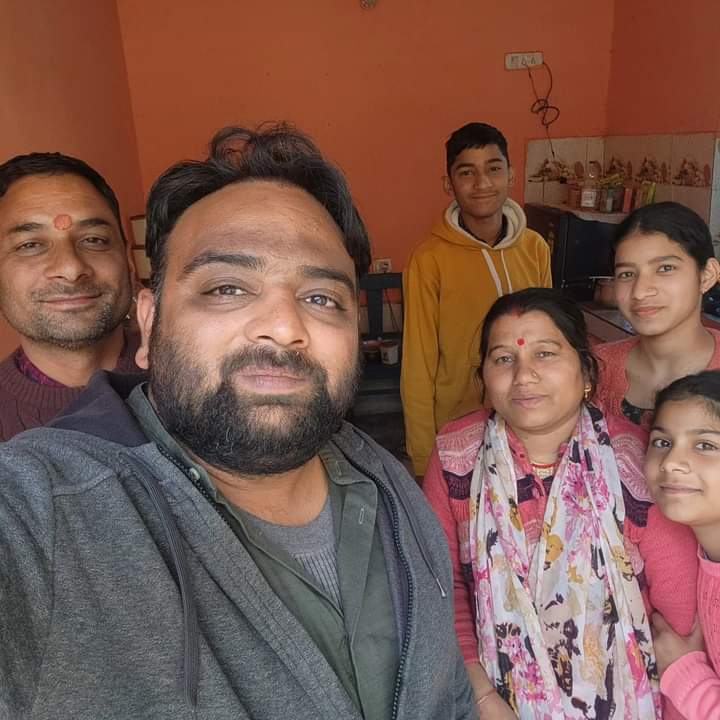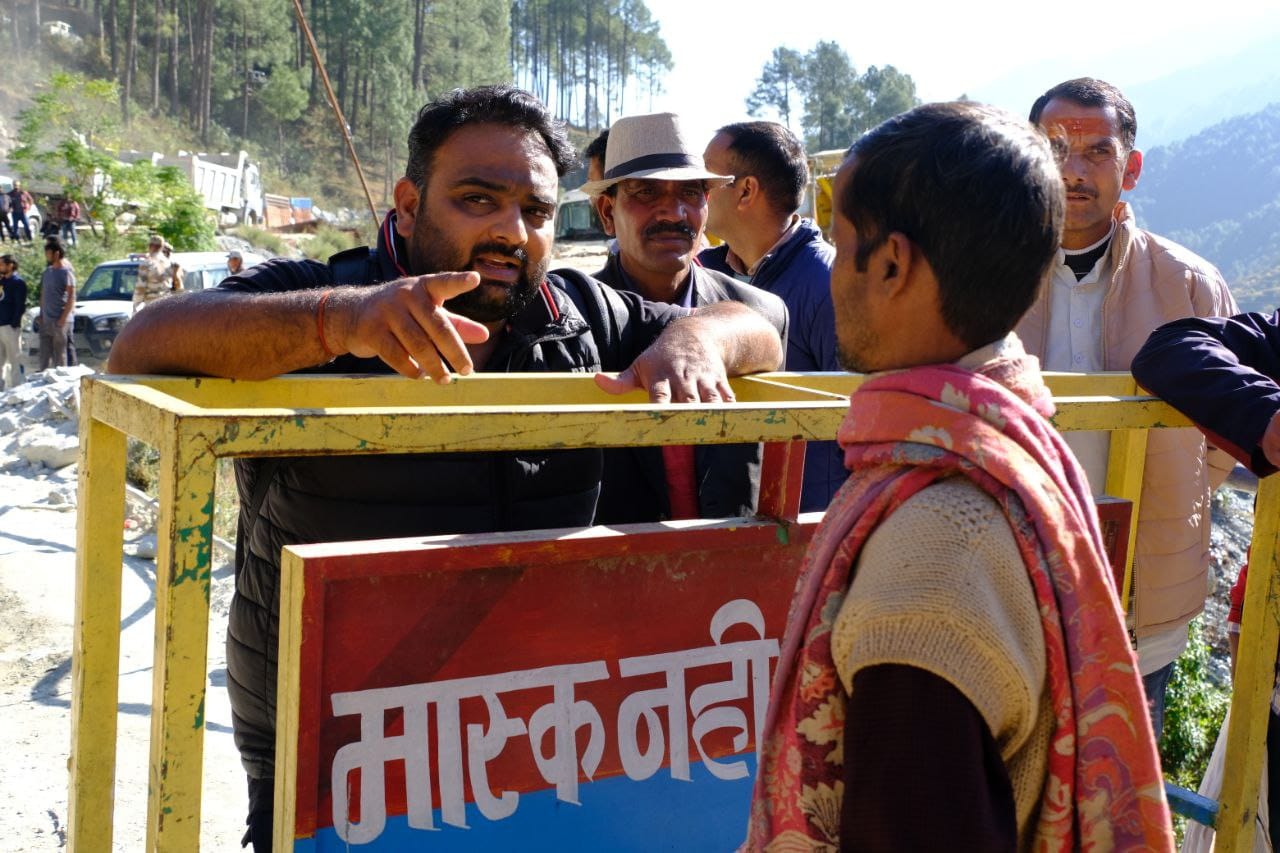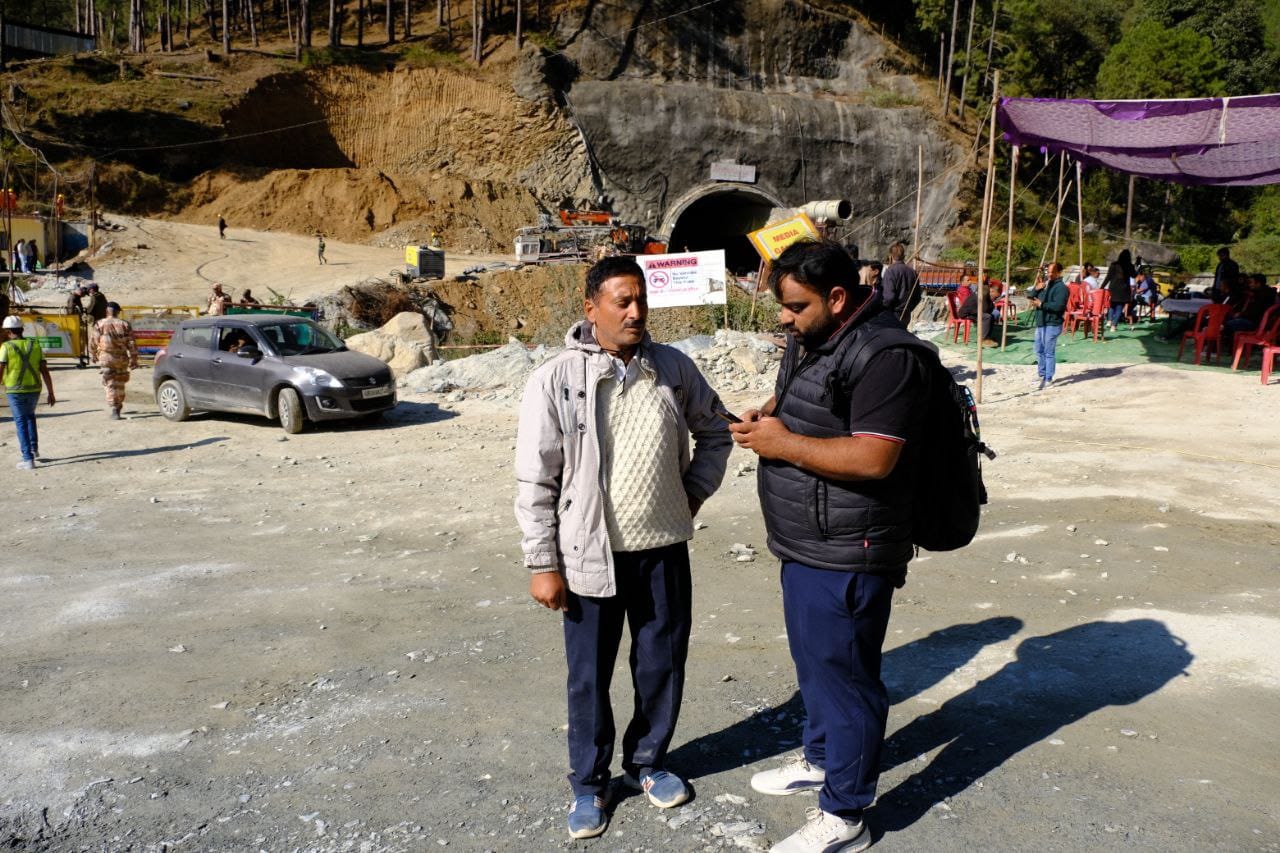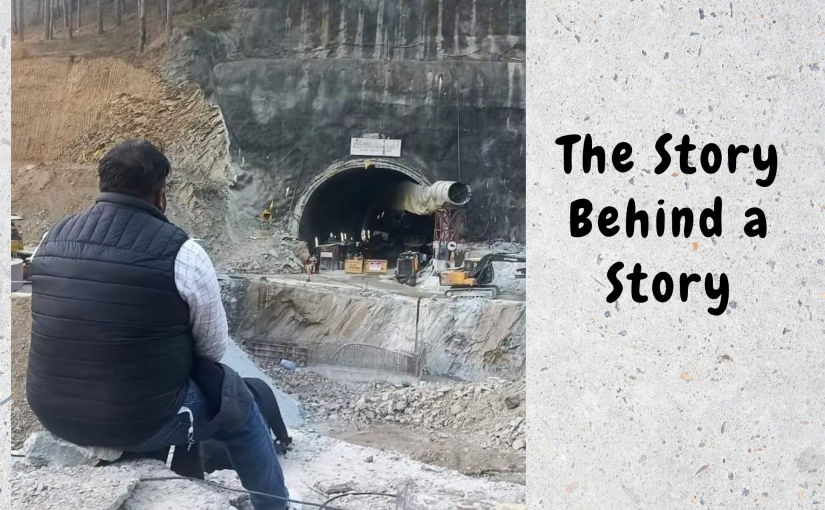The beginning of a new year is the perfect time to reflect upon the year gone by. When journalist Saurabh Sharma looks back at his last year’s professional journey, one assignment stands out. It wasn’t just a story. It was an experience that touched him personally. When he went to cover the Uttarakhand tunnel tragedy, little did he know that he would come back with a bagful of unexpected episodes of kindness
Swati Subhedar
It was a classic tale of tussle between humans and nature. On the morning of November 12 last year, the day the entire nation woke up all set to celebrate Diwali, at 5:30 AM, an under-construction tunnel at Silkyara-Barkot in Uttarakhand collapsed, trapping 41 construction workers inside. The tunnel was being constructed as part of the Char Dham project, intended to connect important Hindu pilgrim sites in Uttarakhand, with two-lane, all-weather paved roads.
Given that the incident happened in the ecologically fragile Himalayan region—prone to such incidents because of the incessant drilling of mountains to construct roads—it was anticipated that tunnel rescue might take longer than initially anticipated. Breaking news soon turned into a constantly developing story. A slew of journalists started arriving at the collapse site. Among them was Saurabh Sharma from Lucknow.
Silkyara is an important connecting point for tourists going to Yamunotri, one of the four destinations of the Char Dham Yatra. The holy shrines of Char Dham open every year with the advent of summers in April-May and close with the starting of winter months of October-November.
So, when the tunnel collapsed, most of the hotels, restaurants, home stays and dharamshalas, that host incoming tourists during the peak season, were closed, or were winding up. Most of the owners had moved to their homes in Dehradun, the state capital, and other cities in the plains as it was the beginning of the off season. The others were packing up.
The journalists, who could not miss even a minute of coverage after the rescue operations began, were facing logistical issues like food, transportation and accommodation. While some stayed at one-two hotels that were still operating, it wasn’t much of a help because these were functioning with less than half the staff strength. Most reporters went back after the initial coverage. Very few, including Saurabh, decided to stay till the end of the rescue operations. At that point in time, no one knew that it would take 17 long days.

Saurabh was fortunate to meet the Vidhan family when he arrived in Silkyara. The family owns a modest eight-room homestay with minimal facilities and a common washroom. They were also packing up for the season but decided to let him stay. Saurabh, who thought it would be a short trip, wasn’t prepared for a long stay. The very first problem he encountered was that of laundry. The nearest market area was two hours away and it wasn’t possible for him to leave the collapse site even for a few minutes. So, he asked Mrs Vidhan if there were any laundry facilities around—a common practice in the hills where tourists are allowed to wash clothes in public washing machines in exchange for a small amount. Everything was closed. “She told me not to worry and said she would wash all my clothes in their washing machine. I was very hesitant, but since I was carrying limited clothes, there was no option. I was genuinely touched,” says Saurabh.
After the exhausting and physically demanding reporting sessions began, for most meals, he would eat Maggi and parathas, two things that are readily available in hilly areas. “After 3-4 days, I could no longer eat that. When Mrs Vidhan realised that I was facing this issue, she instantly said I could eat meals with the family. Very lovingly, she would prepare kadhi, chicken curry and daal,” recalls Saurabh. The market was quite far, and it would not have been easy for the family to arrange for these things, but they went out of their way to make him feel at home.
“I will never forget the day when Mr Vidhan, who works with the state electricity department, bought fruit cakes for me from the market. Even his children, one son and two daughters, would keep checking on me. Every afternoon and evening, they would give me a call to ask what I preferred for meals. When the family learnt that I don’t drink milk tea and prefer lemon tea instead, they started making lemon tea. All this, of course, came at a price, but just the fact that a family was willing to do so much for a stranger, was very touching for me,” says Saurabh.





Since it was the beginning of winter, the temperature had started dipping. “One day, the temperature dipped to minus. I wore all the clothes that I had and still I was shivering (top left). Mrs Vidhan went to the market and bought a heater for me. Mr Vidhan came at midnight to check on me and gave me extra blankets,” recalls Saurabh.
It was because of the kind gesture of the family and all the help they provided, Saurabh had the mental bandwidth to focus on the rescue operations that were going on in full swing. All sorts of equipment, like JCBs and Auger machines, were deployed, but it was proving to be extremely challenging because the debris would reclaim at the spot where digging was being done to save the 41 construction workers who mostly hailed from Jharkhand, Bihar and Uttar Pradesh. Their anxious family members, too, had started arriving in Silkyara and were staying at the makeshift labour camp. It was there that he met Chaudhary ji whose son Manjeet was trapped inside the collapsed tunnel.
“He hailed from Lakhimpur Kheri (in Uttar Pradesh). He had to mortgage his wife’s jewellery to come to Silkyara. He had Rs 9,000 on him when he arrived. The rescue went on for a few days, and because of the extreme weather conditions, some of the family members decided to go back. They didn’t have enough money, so Chaudhary ji helped some of them. In the end, he was left with Rs 254,” says Saurabh.
On November 21, nine days after the tunnel collapse, officials managed to insert an endoscopic flexi camera inside the collapse site. It was the first time that live images of the trapped workers came alive. But Chaudhary ji could not spot his son Manjeet. He called home. Some people were from the village, who were following the rescue story on their mobile amid shaky network, informed him that they had seen Manjeet. “He was very happy The way his moist eyes lit up, it was the most touching moment for me,” says Saurabh.

Finally, after 17 days, Operation Zindagi ended. What machines could not achieve was accomplished by manual diggers, who diligently, for hours, dug through the tunnel manually by adopting rat-hole mining techniques, and rescued all the 41 workers. They were kept in isolation for 24 hours and were later admitted to AIIMS in Rishikesh. The workers and family members found themselves surrounded by journalists who were there for interesting quotes and bytes. “I managed to talk to a few, but realised they should be left alone. They should be allowed to spend with their families,” says Saurabh.
After the rescue, the story was no longer on the front pages or on prime-time slots. Everyone moved on to the next big story. An exhausted Saurabh returned to Lucknow after all the workers, their families and the journalists left from Uttarakhand. When things settled a bit, he realised it wasn’t just a story; it was an experience of a lifetime. “The kindness showered on me by rake strangers is something that I will never forget. I am still in touch with the Vidhan family, and all others who helped me,” says Saurabh.
Image courtesy: Saurabh Sharma
Also read: The ghost villages of Uttarakhand, Collarwali Supermom, Almora diaries
